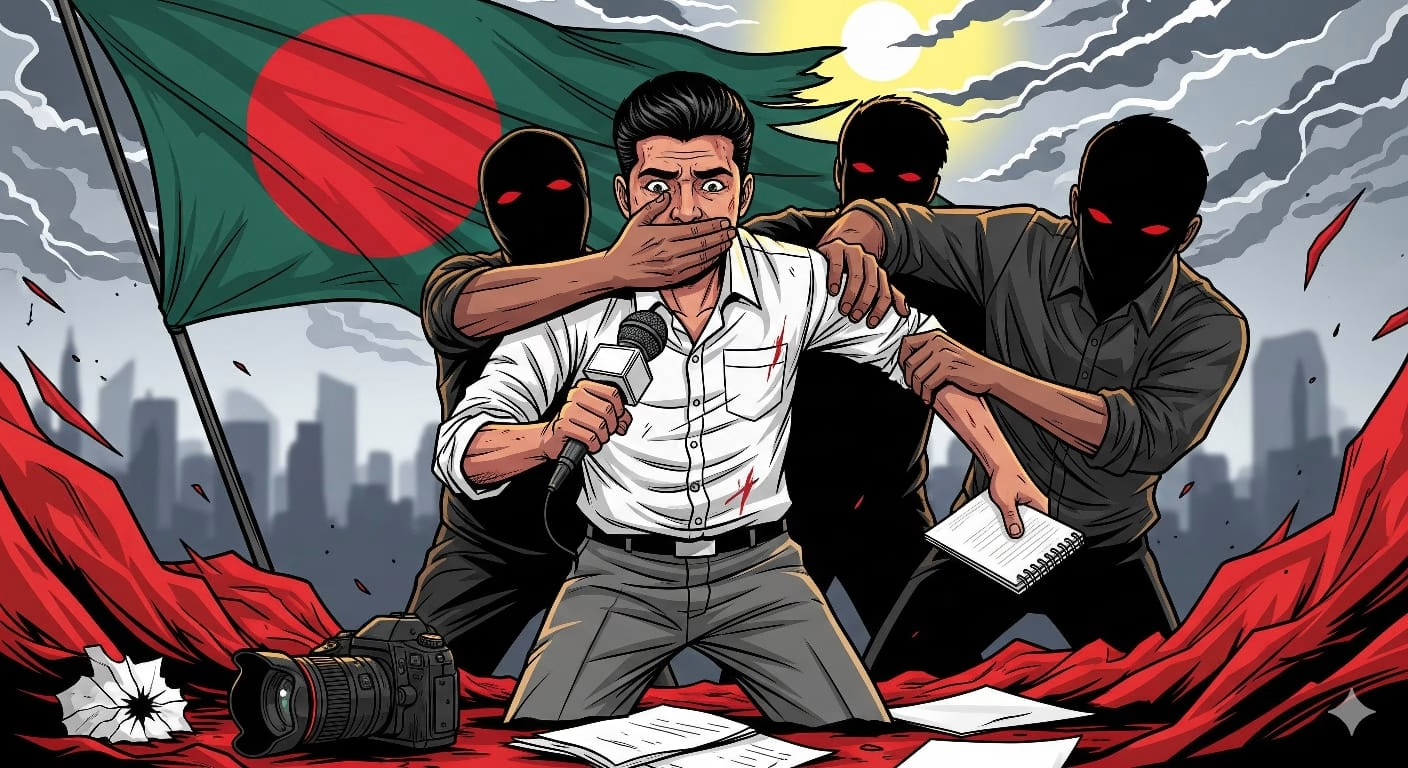From busy streets to courtrooms, journalists no longer seem safe anywhere, as escalating violence and political pressure deepen the crisis surrounding press freedom in the country.
Reports highlight widespread oppression of journalists in Bangladesh between August 2024 and July 2025.
According to the Human Rights Support Society (HRSS), in August 2025 alone, 72 journalists were targeted across 39 separate incidents, resulting in one death and 33 injuries. Additionally, one journalist was arrested, and 19 others were dismissed from their jobs.
On 7 August 2025, the nation was left in shock when journalist Asaduzzaman Tuhin was fatally attacked in Gazipur while filming an assault on a woman.
Armed youths chased him down and hacked him to death in broad daylight. The video of the killing, which quickly spread online, sparked widespread outrage.
Just this Thursday, Asif Muhammad Siam, a journalist with Somoy TV, was assaulted by lawyers while covering a bail hearing in a Dhaka courtroom.
The incident unfolded after journalist Muktadir Rashid Romeo asked a defendant, Monjurul Alam Panna, a question. Panna, who is also a journalist, had been arrested under the Anti-Terrorism Act.
In response, lawyer Muhiuddin verbally abused Romeo and then attacked Siam when he intervened in support of Muktadir.
Siam was dragged out of the courtroom and continued to be beaten, leaving him bloodied.
Another lawyer eventually stepped in and escorted him to safety.
This latest incident raises a troubling question: If a journalist can be attacked inside a courtroom, what does that mean for press freedom in the country?
Experts argue that journalism in Bangladesh is deeply intertwined with the country’s political realities, making it impossible to view the media system in isolation.
Saiful Alam Chowdhury, associate professor of Media, Communication and Journalism at Dhaka University, emphasised that the media in Bangladesh is inseparable from the political system.
“The media system is bound to follow the political system. You cannot think of the media system as existing outside the political system,” he told TIMES of Bangladesh.
He noted that this political entanglement has fuelled a rising culture of fear, especially from mob violence.
“The culture of fear has grown at least 30 times more in the past year,” he said. “Now, I’m under threat both online and offline – from mobs.”
Chowdhury also criticised the government’s failure to enforce journalist protection laws.
“Unless the political system changes, none of these laws will make a difference. Even if you pass 100 protection laws, it won’t help,” he said.
According to Transparency International Bangladesh, 496 journalists were harassed and three were killed while on duty from August 2024 to July 2025.
TIB noted that press freedom has been undermined through “indirect and systematic means” even under the interim government.
Journalist protection law needed
The government formed an 11-member Media Reform Commission on 18 November 2024, with the goal of recommending measures to strengthen media independence, integrity, and objectivity.
Chaired by journalist Kamal Ahmed, the commission submitted its report to Chief Adviser Muhammad Yunus at the state guest house Jamuna on 22 March 2025.
However, according to Kamal Ahmed, the reform process has since come to a halt.
In a recent Facebook post, he expressed concern over the delay, stating that certain incidents could have been avoided if a journalist protection law had already been in place.
“The law to protect journalism, which we proposed as part of the Media Reform Commission’s recommendations, was meant to be enacted by now. Unfortunately, the entire process has stalled,” he wrote.
He called on the public to demand immediate passage of the proposed law as an ordinance.


